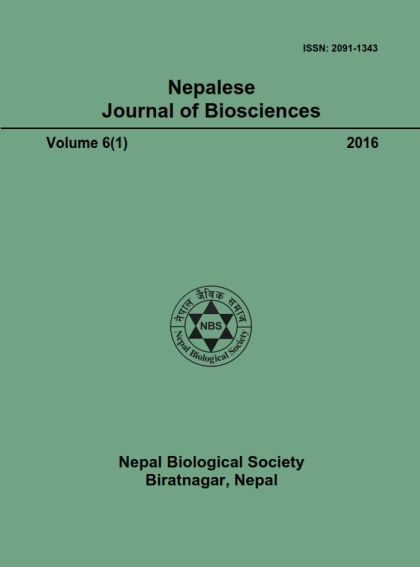Ecology of Nymphaea pubescens Willd.
DOI:
https://doi.org/10.3126/njbs.v6i1.41797Keywords:
Biomass, germination, nutrient, productivity, rhizomeAbstract
In an aged shallow pond at Biratnagar, Nepal, importance value index of Nymphaea pubescens ranged between 258 (July) and 75 (October). The productivity of the Nymphaea association was 681.6 g/m2/yr. The water samples had higher values of pH, nitrogen and ammonia in June (initial phase of growth), but higher values of electrical conductivity, dissolved solids, turbidity, nitrite, nitrate, phosphorus and potassium in November (senescence phase of the plant). The C/N ratio of the base-layer soil was 15.79:1 in June, but 17.27:1 in November. In comparison to other plant parts, highest concentrations of nitrogen (3.73% in July), and potassium (2.04% in August) occurred in leaves; and phosphorus (1.4% in September) in rhizome and roots. Fresh seeds had 90% germination and 8 month old air-dried rhizomes had 86% sprouting when immersed in water.




